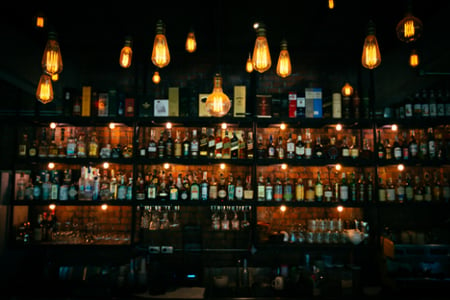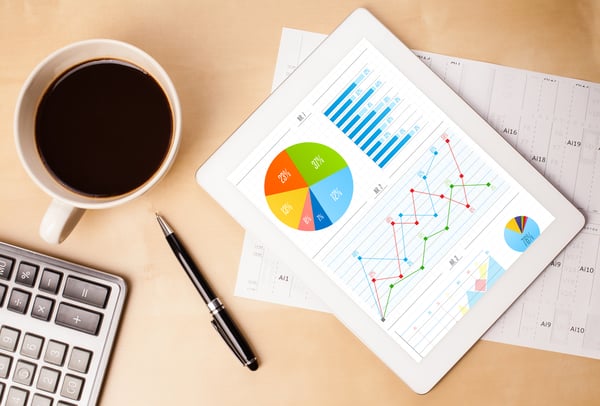Keeping a steady stream of revenue, or cash flow, is always important for bars and restaurants. This has been a difficult year to navigate with the rollercoaster of recovery from Covid-19 making it hard to know what to expect. Maintaining and leveraging cash flow is more important than ever in 2021. Bars and restaurants are have tried to expand revenue sources through increased delivery, to-go cocktails and alcohol, and by cutting costs. As the restaurant industry attempts to bounce back from losses and restrictions imposed by Covid-19, these 5 strategies can help bars improve cash flow.
1. Improve how you do bar inventory
 Bar inventory is the cornerstone of a strong bar program. Without a consistent strategy for taking inventory, bar operators are running their business by guesswork and gut instinct. That might be fly in good times, but when economic uncertainty and public health fears add new obstacles to navigate, it takes smart decision making to sustain a business and support employees.
Bar inventory is the cornerstone of a strong bar program. Without a consistent strategy for taking inventory, bar operators are running their business by guesswork and gut instinct. That might be fly in good times, but when economic uncertainty and public health fears add new obstacles to navigate, it takes smart decision making to sustain a business and support employees.
Take a look at how you are doing inventory, and see if you are making any of these common inventory mistakes.
Are you?
- Taking inventory inconsistently or not at all
- Not tracking important data like cost of goods, product usage, and item sales
- Not comparing inventory data month-over-month
- Not using inventory counts to set par levels for products
- Unaware of liquor costs and where you can improve profit margins?
If you answered "yes" to any of these questions then you have a problem! But that's okay, because problems can be fixed. By fixing issues with inventory management, you'll be able to turn higher profits on drink sales and better manage cash flow to keep your business running smoothly.
How to make bar inventory easier
One reason managers and owners don't take inventory is that it's a lot of work. Restaurant operators are often squeezed for time and because guest service always takes precedence over office work, back-of-house operations can often be ignored. That's why figuring out how to streamline inventory and spend last time crunching numbers should be your first priority when you want to improve cash flow.
The first step for improving inventory is to create an organized system to record, track, and analyze inventory data. To do that, you can build your own spreadsheet or download a bar inventory template to help you get started.
Spreadsheets are the most common way to record inventory, but they can be time consuming to set up and require a strong understanding of building spreadsheet formulas to calculate important data.
To avoid the added work of managing spreadsheets, you should instead look at bar inventory software solutions to find the right one for you. Because we're talking about improving cash flow, we'll focus on a free bar inventory app.
Try Backbar, the free bar inventory solution

Backbar is a free bar inventory app that helps simplify bar management. You'll be able to cut time taking inventory counts, price drinks and cocktails, place orders with vendors, and track inventory performance with product reports.
Other Bar Inventory Software
There are a number of inventory solutions available for bars and restaurants that you can review to find the right provider. Here's a few notable companies.
- Accubar
- Bar Cop
- Bevinco
- Bevspot
- Craftable
- Partender
2. Understanding inventory turnover rate can lower costs

Time to take out your calculator!
Understanding how a well a wine or beer sells is really important. But it's not the only factor that determines a product's performance. When looking at how valuable an item is there's a few factors to look, inventory turnover is really helpful metric for bars and restaurants to use to analyze inventory performance.
First, let's answer the question "what is inventory turnover?"
Inventory turnover days is a ratio that tells you how many time you have sold and replaced inventory during a specific time period.
Reduce overstock and excess bar inventory
Knowing the inventory turnover rate tells you how quickly you get a return on investment for your bar products. Essentially, it tells you how long it takes for you to see full profit returns for the alcohol you've purchased.
Because most bars and restaurants take inventory monthly, using a month as a time period is a good benchmark for your time period. For your time period, you'll use 2 dates to mark beginning inventory (the previous inventory session date) and ending inventory (the most recent inventory session date.
For most bar operators, inventory is taken on the last day of each month. So if you're looking at inventory turnover for the month of August, your beginning inventory date would be July 31st and your ending inventory date would be August 30th.
Finding out inventory turnover is a multiple step process that requires consistent inventory and purchasing habits. First, you'll need to calculate your average inventory value for a product.
Inventory Turnover Formula
Here's the formula for calculating inventory turnover rate for a single product, we'll use Tito's Vodka as an example below.
To calculate average inventory value, use the following formula:
(Beginning Inventory Value + Ending Inventory Value) / 2 = Average Inventory Value
Next you can to calculate inventory turnover with this formula:
Cost of Goods Sold / Average Value of Inventory = Inventory Turnover
And finally, you can calculate inventory turnover rate:
Days [between beginning and ending inventory] / Inventory Turnover = Average Inventory Turnover Rate
Example
At the beginning of month 1 you count $600.00 of Tito's Vodka in inventory. At the end of month 2 you count $600 in inventory. Your average monthly inventory is ($600 + $800) / 2 = $700.
If your cost of goods sold for Tito's during that period is $1,500 then you'll calculate $1500 / $700 = 2.14
If you divide the number of days in the period (90) by your turnover (2.14), you'll find out that you sell through your inventory every 42 days.
How inventory turnover helps lower pour costs

Understanding your inventory turnover day rate will help you better utilize expenses by telling you how often you sell through product and recoup the initial investment on that product. You can use this data to adjust how you often your order a product and in what quantity you purchase it.
For example, if a liquor like Tito's has a high turnover rate, then you can order in higher quantities and less often because you'll know you can recoup your expenses quickly.
Larger purchases quantities can also help you qualify for case and quantity discounts on products offered by distributors which will lower your cost of goods.
3. Offer a smaller menu with fewer beer, spirit, and wines offerings

By using the data you find from inventory turnover rate or from tracking usage rate for items you can determine which products are your best performers.
By knowing which items your customers are looking for you can then cut out underperforming items that aren't selling. You can provide great selections to your guest while trimming the fat from your menus.
One issue bar operators come across when cutting back menu offerings is how to get rid of old inventory that isn't selling. A restaurants offering a smaller menus only benefits them financially if they aren't carrying a thousands of dollars worth of deadstock in the backroom.
So the first step in reducing a menu is reducing inventory. Here's some tips for selling products that aren't moving.
Create cocktail specials with overstocked liquors
This can actually be a pretty fun exercise by forcing you to spark some creativity. Take a look at what old products you have collecting dust in your liquor room. It might be a flavored vodka that didn't never caught on with the crowds or neon liqueur that should have stayed in the 90s. Whatever you find, look to incorporate into cocktail specials.
Swap Well Liquors
Another way to use up old liquors is to temporarily substitute a different liquor for well or call drinks. Even if the replacement liquor doesn't have as desirable of a profit margin, you're reducing inventory stock which will help lower your overall inventory costs.
Get Creative with Specials
The best way to sell down wine and beer inventory is to offering those drinks on specials. Whether happy hour discounts, half-priced wine bottles, or selling buckets of beers, you'll have to get creative with offering enticing specials that help sell down inventory while returning profits.
Key Takeaways
You can see from this article that the most operational task for a successful bar is having strong and consistent inventory strategy. Strong inventory is more than just taking bottle counts, it's about tracking inventory performance, product costs, and other data and using that data to make informed decisions about inventory.
- To understand where to strengthen your bar, you need to understand your inventory performance
- Tracking important data like inventory turnover rate or product usage helps reduce costs by improving how you spend your money
- Reducing inventory lowers your overall inventory costs and helps focus your sales on the best performing items

